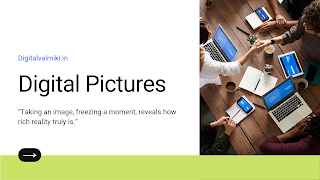Different ways of Digital Pictures
A Digital picture is an image that is put away on a PC. It has been digitized, which implies it has been changed into a grouping of numbers that PCs can comprehend.
Digital pictures are made of picture components called pixels. Ordinarily, pixels are coordinated in an arranged rectangular exhibit. The size of a picture is dictated by the elements of this pixel exhibit. The picture width is the number of segments, and the picture stature is the number of columns in the exhibit.
The Two Types of Digital Pictures: Vector and Raster
All advanced picture files can be categorized as one of two classes, vector, and raster. Each organization enjoys benefits and hindrances in various circumstances, so knowing the properties of each can help figure out which configuration is the most ideal decision for any venture.
Vector files are most helpful when a really should have the option to deal with resizing, as they hold fresh detail when scaled to any estimate. Vector design is an astounding decision for advanced delineations like logos.
A vector document can be changed over to a raster record; however, it will for all time lose the upsides of the vector design.
Regular vector record expansions:
SVG – online vector design
EPS – Adobe-based vector design
EMF – Microsoft Office-based vector design
Raster pictures are best for complex pictures like photos and are bound to be a generally viable document design (like JPG). Notwithstanding, raster pictures lose detail and become progressively hazy when extended.
Vector the picture can be saved as a raster picture; it is preposterous to expect to change over a raster picture into a vector picture. Raster files saved as vector document configurations will in any case be raster documents. Most pictures on the web are raster documents.
Regular raster record expansions:
JPG – compressed raster format, often used for photos
Best for web use, Small file size, Universal – compatible with most software
Most images on stock photography websites will be downloaded as JPG files
PNG – raster format good for illustrations or icons
Supports transparency, unlike JPG, Best for web use, and Small file size)
TIFF – raster format that is best for high-resolution printing
Great for professional print use, especially when preserving crisp image detail is important and Large file size
By default three most generally utilized advanced picture designs on PCs and cell phones are GIF, PNG, and JPEG.
